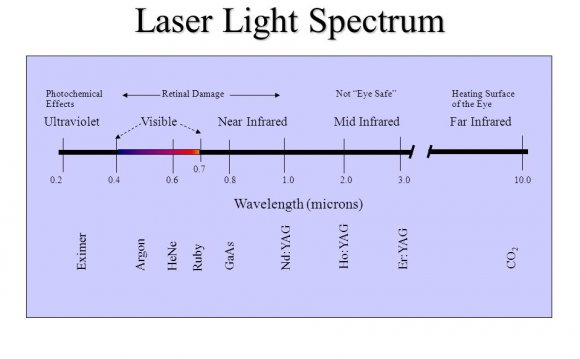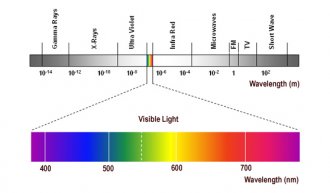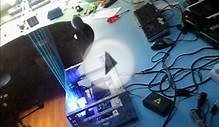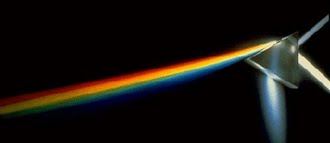

Laser Radiation and the Electromagnetic Spectrum
Electromagnetic radiation is a natural phenomenon found in almost all areas of daily life, from radio waves to sunlight to x-rays. Laser radiation – like all light – is also a form of electromagnetic radiation. Electromagnetic radiation that has a wavelength between 380nm and 780nm is visible to the human eye and is commonly referred to as light. At wavelengths longer than 780nm, optical radiation is termed infrared (IR) and is invisible to the eye. At wavelengths shorter than 380nm, optical radiation is termed ultraviolet (UV) and is also invisible to the eye. The term "laser light" refers to a much broader range of the electromagnetic spectrum that just the visible spectrum, anything between 150nm up to 11000nm (i.e. from the UV up to the far IR).
The Fundamentals of Laser Operation
The word ‘laser’ is an acronym for Light Amplification by the Stimulated Emission of Radiation. A laser was first demonstrated in 1960 by Theodore H Maiman working at the Hughes Corporation, although the term ‘laser’ was first coined by Gordon Gould of Columbia University.
To understand how laser action occurs, one must first consider the atomic nature of matter. An atom consists of a central nucleus surrounded by a cloud of electrons. Quantum theory explains that the electrons in atoms exist in discrete energy states and at thermal equilibrium they are maintained in the so-called ‘ground state’. The energy state of an atom can be altered by the emission or absorption of a photon of electromagnetic radiation (light). The electron cloud in atoms which have absorbed light is referred to as existing in an ‘excited’ or ‘higher level’ energy state.
In ordinary light sources such as a filament bulb, electrical energy passing through the tungsten ribbon raises the electrons in the metal atoms into excited energy states. The electrons return to their ground state spontaneously and in so doing release packets, or quanta, of optical energy called photons. Atoms in ordinary light sources radiate photons independently of each other and no phase relationship exists between them. In other words, light generated by spontaneous emission is incoherent. This lack of coherence is one important characteristic that distinguishes ordinary light sources from lasers.
Einstein was the first scientist to propose that an excited atom can return to its ground state in either of two processes, which he referred to as ‘spontaneous’ and ‘stimulated’ emission. The conditions for stimulated emission, and hence laser operation, require that the excited atom is prompted into emission of a photon by the application of light of the same frequency (wavelength) as that which the electron decay itself will produce. Unlike spontaneous emission, the photon emitted as a result of this electromagnetic stimulation carries the same phase, frequency, polarisation and direction as that of the stimulating radiation. If one were to consider the case where all of the atoms have been excited into a higher energy state (known as a population inversion), the stimulating radiation would trigger an avalanche of stimulated photons that are all emitted in phase and in the same direction.
The stimulating radiation in a laser is provided as a result of feedback within a resonant optical cavity. In practice, a laser cavity is normally comprised of a 100% reflecting rear mirror and a partially reflecting front mirror (the partial reflectance is necessary to let some light out of the laser whilst still providing the feedback required for laser action). When illuminated (or "pumped") by a radiation source such as a flashlamp or diode laser, the broadband emission that results from the spontaneous photon emission travels back and forth and experiences the highest gain (amplification) at a frequency determined by the configuration of the resonator and the optical characteristics of the laser medium. That gain leads to all of the photon emissions occurring on the same, chosen, transition in the same direction, and all with the same phase relationship. This amplification of the stimulated emission of coherent, near-monochromatic, unidirectional photons is what defines laser action.
Laser action can occur in many materials that exist in solid (crystaline or semiconductor), liquid or gaseous states. An example of a solid state laser is the Nd:YAG, while semiconductor lasers are commonly referred to as diode lasers. The dye laser is an example of a liquid laser, while probably the most common gas laser is the CO2.
 Laser Operating Modes
Laser Operating Modes
It is often said that almost any material can be made to lase. Lasers differ not only with respect to the wavelength of the light they produce but also the optical power and the manner in which the power is emitted. Lasers which emit a continuous beam of light are termed "cw" (after continous wave operation), while other lasers produce an output in the form of pulses of light. For the purpose of classifying their hazards within the laser safety standards, pulsed lasers are placed into different groups depending upon the length of their optical pulses. The table below lists the four groups.
|
Operating Mode |
Designation |
Description |
Pulse Length |
| Continuous Wave (CW) | A laser that produces a continous output | 200ms | |
| Pulsed | A laser that produces a single or sequence of periodically repeated pulses |
1µs to 200ms |
|
| Giant Pulsed | A laser that produces very short pulses (e.g. Q-switched) |
1ns to 1µs |
|
| Modelocked | A laser that produces ultrashort pulses (i.e. picosecond or femtosecond) |
< 1ns |
In the case of pulsed operation with a low pulse repetition frequency (the number of pulses emitted per second), the critcal parameter from a laser safety point of view is the peak power of each pulse. If the repetition rate inceases, the average power becomes the more dominant parameter. Please note that certain lasers can be operated in more than one mode.
The Four Laser Hazard Classes
Lasers are categorised into four, general hazard classes based upon accessible emission limits or AELs. These limits indicate the class of the laser and are listed in EN 60825-1 and the American National Standard ANSI Z136.1 for the safe use of lasers. The AEL values for the laser classes are derived from the medical MPE (Maximum Permissible Exposure) values. The MPE values specify the danger level for the eye or the skin with respect to the laser radiation. Since November 2001, the laser classes are summarised per the table below.
|
Laser Class |
|
|
This class of laser does not produce dangerous radiation. No need for protective equipment. |
|
|
1M |
This class of laser is eye safe when used without optical instruments but may not be safe if optical instruments are used. No need for protective equipment if used without optical instruments. |
|
This class of laser is eye safe as a result of normal human aversion responses, including the blink reflex. No need for protective equipment. |
|
|
2M |
This class of laser has the same powers as a class 2 beam but the beam divergence and/or diameter may render it unsafe if optical instruments are used. No need for protective equipment if used without optical instruments. |
|
3R |
This class of laser emits radiation that exceeds the maximum permissible exposure (MPE). The radiation is a maximum of 5 x AEL of class 1 (invisible) or 5 x AEL of class 2 (visible). The risk is slightly lower than that of class 3B. Dangerous to the eyes, laser safety glasses are recommended. |
RELATED VIDEO













